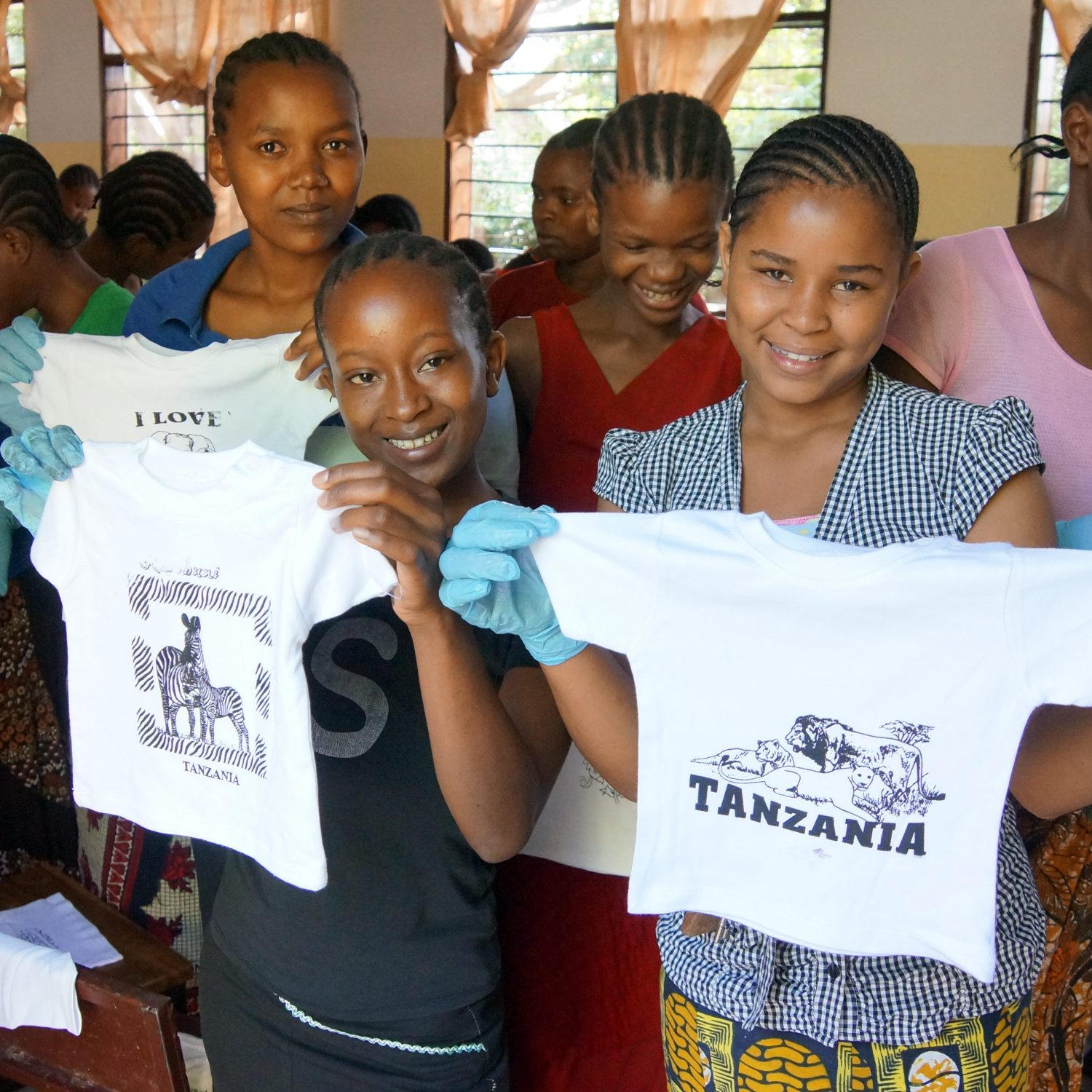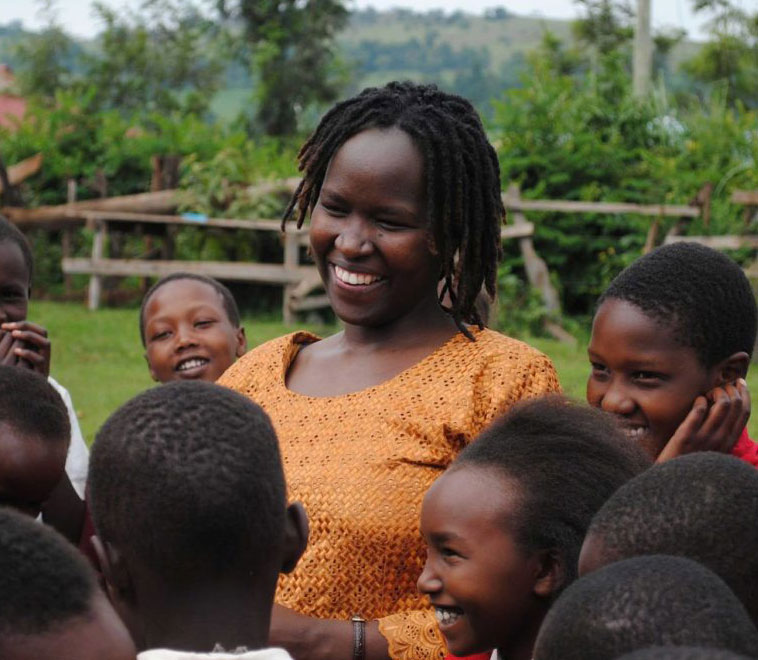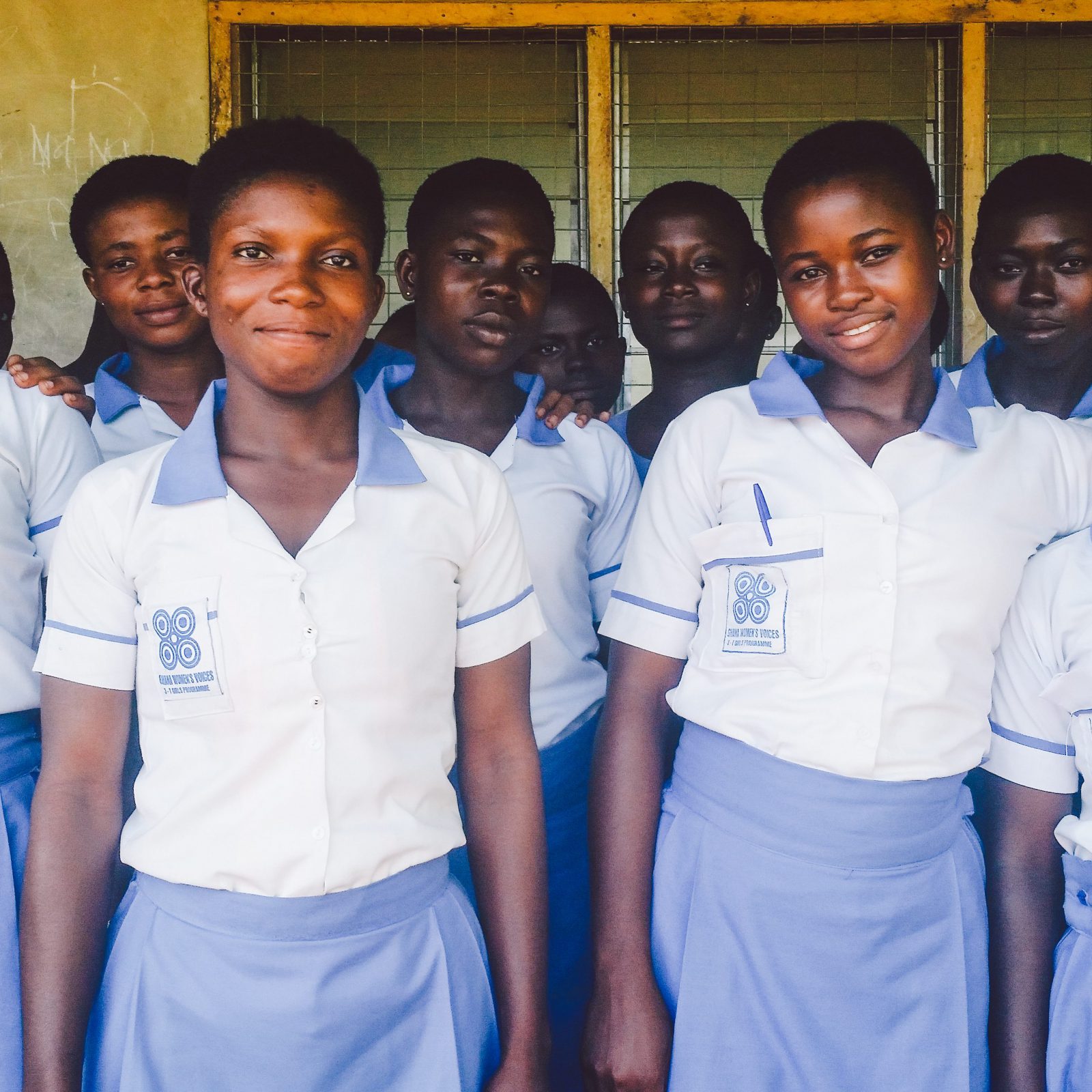Experiences in Kenya lead to reflections on GFC’s role as a risk-taker that helps small organizations find their footing in the philanthropic world.
I am a big fan of social experiments. I know some of them are staged, but I still get fascinated by how differently people react when some dynamics of the same situation are altered. One of my favorite experiments involves a 70-year-old man named Pops who had fallen on hard times and become homeless.
The video begins with Pops wearing well-worn clothes, his hair and beard overgrown and unkempt. The recording captures him trying to talk to people and asking for directions to the library. As expected, people’s reactions are all dismissive, with responses ranging from non-acknowledgment of his presence to an impatient “Excuse me!” or “Nope” without even hearing what he was asking or saying.
The video progresses to Pops being approached by a young man, Latteras, who gives him a simple makeover; Latteras takes him to a hair salon for a haircut and facial grooming and gives him an opportunity to shower. Pops finally emerges wearing a sky-blue suit, a different man.
Pops goes back to the same spot and does the same things he was doing earlier. People’s reactions to him are now the complete opposite of the earlier time; people are patient, they chat, they are cheerful when he greets them and have conversations with him. A woman takes the time to look up directions to the library on her phone and waits for him to write them down, while another gives him detailed directions. Pops is now visible. The little investment that Latteras made essentially unveiled Pops to the world.
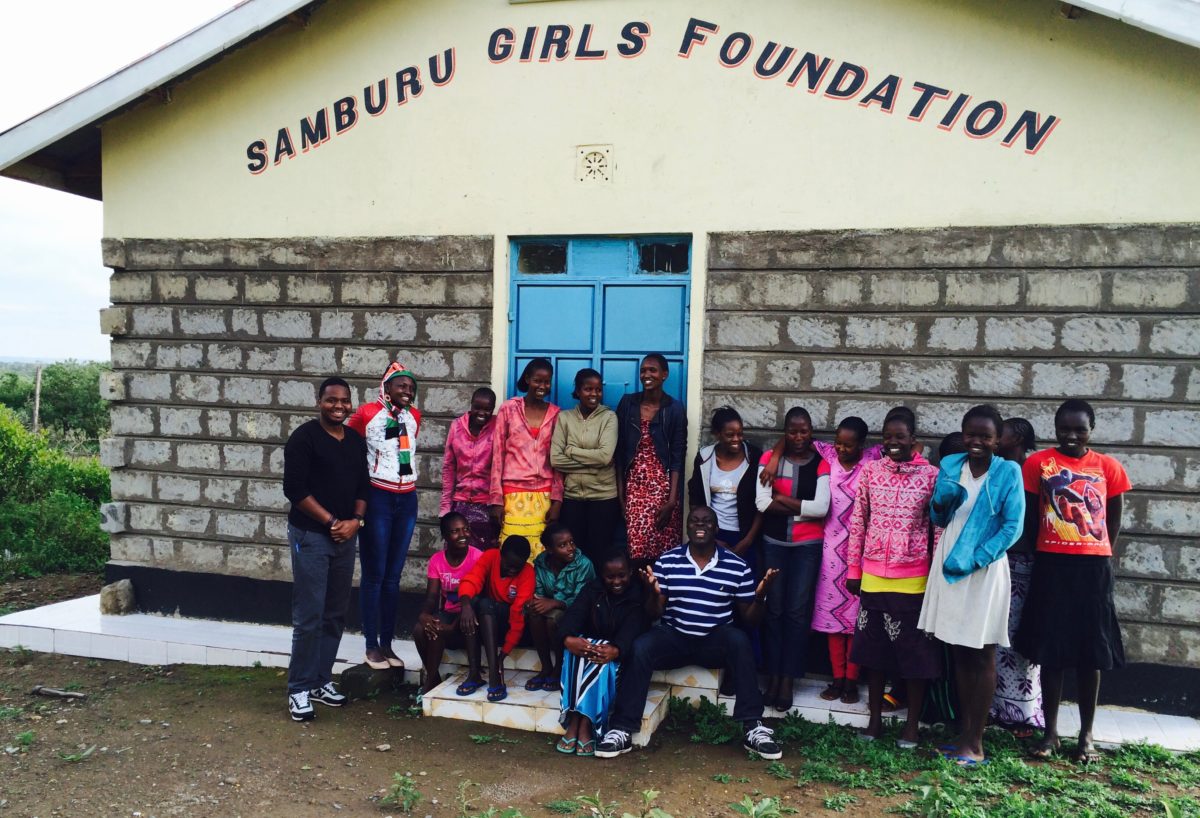
GFC Program Associate Bundie Kabanze (far left) and Regional Director Emmanuel Otoo (center, in striped shirt) visit Samburu Girls Foundation (SGF) in Kenya. © Global Fund for Children
This experiment is analogous to the “Find, Fund, Strengthen” model that Global Fund for Children uses to impact the lives of millions of children, their communities, and civil society around the world. GFC, with the expertise of its regional experts, identifies reputable, high-potential grassroots organizations in their nascent stages; offers them yearly cash grants over a multi-year period; and provides them with management assistance, capacity-building support, and networking opportunities to help them grow. Essentially, GFC seeks organizations that are invisible, cleans them up, and makes them attractive to bigger funders.
Before joining GFC, I thought the sequencing of the steps in the “Find, Fund, Strengthen” model also reflected the level of difficulty in achieving the objectives, with finding being the easiest and strengthening the hardest. It didn’t take long for me to discover how wrong my assumption was.
Within a month of my joining GFC’s Africa team, I was asked to oversee the planning of a Knowledge Exchange in Nairobi, Kenya, for some of GFC’s grassroots partners in Ethiopia, Kenya, Tanzania, and Zambia. GFC’s Knowledge Exchanges bring together partners to share their collective wealth of knowledge and experience and to distill best practices for implementing effective programs for the most vulnerable children and youth. These multi-day workshops are often the only opportunity that partners have to convene and share knowledge with their peers.
It was the first week of May 2016 when I was put in charge of the Knowledge Exchange, and the workshop was scheduled for the last week of June. I received guidance for organizing such an event and acquired further information from reading documents of how previous ones were organized, and it all seemed fairly straightforward. But by the first week of June, just three weeks before the event, the phrase “Not yet” seemed to have become the standard response I was giving my team every time I was asked anything concerning the preparations.
“Have areas of concern to be addressed at the Knowledge Exchange been received from partners?” “Have we identified grassroots leaders to share their knowledge and expertise at the Knowledge Exchange?” “Has any organization volunteered to host a site visit?” “Have flights been booked?” “Is the booklet ready?” The response to all these was “Not yet.”
I was starting to get frustrated with a task that had looked pretty easy at the outset. I needed to get the information to finalize the preparations from the partners, but this information wasn’t forthcoming. I had sent several emails to request and remind potential participants. I was running out of days, and the event wouldn’t happen if I didn’t get feedback really soon.
Frustration soon turned to desperation, as this was hinting at me failing to do my job (within the probation period of my employment, no less). What could be so hard about responding to an email? The Knowledge Exchange would have the answer to this question—and also turn out to be quite a learning experience for me.
The first session of a GFC Knowledge Exchange is dedicated to a gallery walk, an opportunity for participants to showcase their organization to others, sharing its history, mission, goals, programs, challenges, achievements, and way forward. This was my first time meeting the partners, the people behind the emails and reports.
One by one, the participants described the environments they were operating in, the vulnerabilities they were addressing, the interventions being used. I listened to Reuben, from Chimwemwe Organization for the Promotion of Childhood Rights, Education and Development (COPECRED), an organization in Chipata, Zambia, that provides comprehensive early childhood development care for preschool-age children, along with entrepreneurship guidance to families affected by HIV/AIDS, and I learned for the first time that he has to trek over two miles, twice a day, to an internet café to check for any correspondence.
Once he arrives, Reuben may have to join a line at the internet café and wait until it’s his turn. While in line, he will pray that the electricity stays on and that the internet connection is reliable that day. I further learned, at a session on marketing, that COPECRED had no website and that Reuben had not even heard of Facebook or any of the other social media platforms that he could use to promote COPECRED’s work.
I also learned that Mary, of Springs of Hope, the only organization in Machakos, Kenya, that rescues, supports, cares for, and restores hope to abandoned and abused children, can only respond to emails on Fridays, because that is when she gets back from the project areas and when the internet café has electricity. As the presentations progressed and I learned more about the partners, the challenges I experienced while doing my job became more insignificant and I became ashamed of getting frustrated because of a delayed email response. I concluded the day with new respect for what GFC’s partners do and the sacrifices they make.
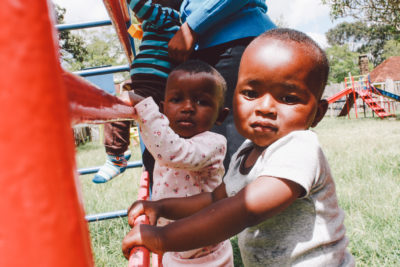
On the last day of the Knowledge Exchange, I was invited to the dining area to meet a potential partner introduced to GFC by a peer organization. My team member and I spent the next hour listening to Josephine Kulea, the founder and director of Samburu Girls Foundation (SGF), make a pitch for her organization. SGF rescues girls from harmful cultural practices such as forced child marriage and female genital mutilation in Samburu, Kenya, and gives them a second chance at life by helping them to obtain access to formal education.
After the initial information sharing, which followed intensive research about the organization, we thought that SGF might be a good fit for GFC. It was decided that the following day we would visit the project site, meet the program participants and some of the community members, and gain a more detailed understanding of how SGF operates. Visiting the projects, seeing an organization in person, and understanding the programs, rather than making decisions based only on letters of inquiry, is one of the major steps taken by GFC to ensure authenticity of prospective partners.
Josephine advised us to hire a reliable off-road vehicle and carry a lot of water and food, for it was a long trip. And she wasn’t joking. We set out for Samburu from Nairobi at 5:00 AM, with about 263 miles ahead of us. Characteristic of all road trip beginnings, we chatted away, told jokes, listened to music, and recounted tales of previous travels. By 11:00 AM, the stories were no longer as interesting and the jokes not as funny. Around midday, the sighting of some of the wildlife that Kenya is famous for spiced the trip up, but we had not yet reached our destination.
Eventually, at about 4:00 PM, after countless dozing sessions and peanut packets, we arrived in Samburu and finally got to meet the girls that SGF supports. The sheer joy the girls expressed upon seeing the visitors and Josephine, who they affectionately called their mother, was enough to make all of us forget how excruciating the trip was.
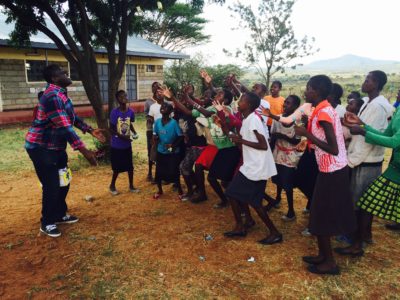
After interacting with the girls and hearing their heartbreaking stories of abuse and escape, as well as their impressive aspirations, I was left wondering what their lives would have been like without the intervention of SGF. At the time, the organization had over 300 girls in its program. Despite the invaluable work that SGF was doing, we discovered that it didn’t have paid staff, a physical office, or functional organizational and financial structures. All business was conducted in the personal vehicle of one of the volunteers.
These facts alone would be enough to scare most funders. But this is the kind of organization that GFC is attracted to, organizations that are about service to the community and nothing else. GFC takes the risk that most funding organizations shy away from because it understands that its partners’ primary responsibility is meeting the needs of their beneficiaries and not organizational aesthetics. Genuine, organic grassroots organizations spring up out of the need to find solutions to societal problems. Their vision is unidirectional, to the people they serve. Issues of “proper” financial, governance, and personnel structures are at the bottom of their priorities list.
Later that evening, as I lay down in my $20-per-night executive suite hotel room, with loud music pounding from a bar across the street, I reflected on the work that all GFC grassroots partners do. I thought about the kind of future that the girls I had met earlier in the day would have if SGF failed to function because all funders saw the organization as a risky investment. How many funders had missed the opportunity to be of service to the most vulnerable communities just because the organizations that served them directly where not “dressed right”? My last thought as I drifted off into exhaustion-induced sleep was of being glad that I was part of an organization that played Latteras’s grooming role. I definitely was with the right team.
